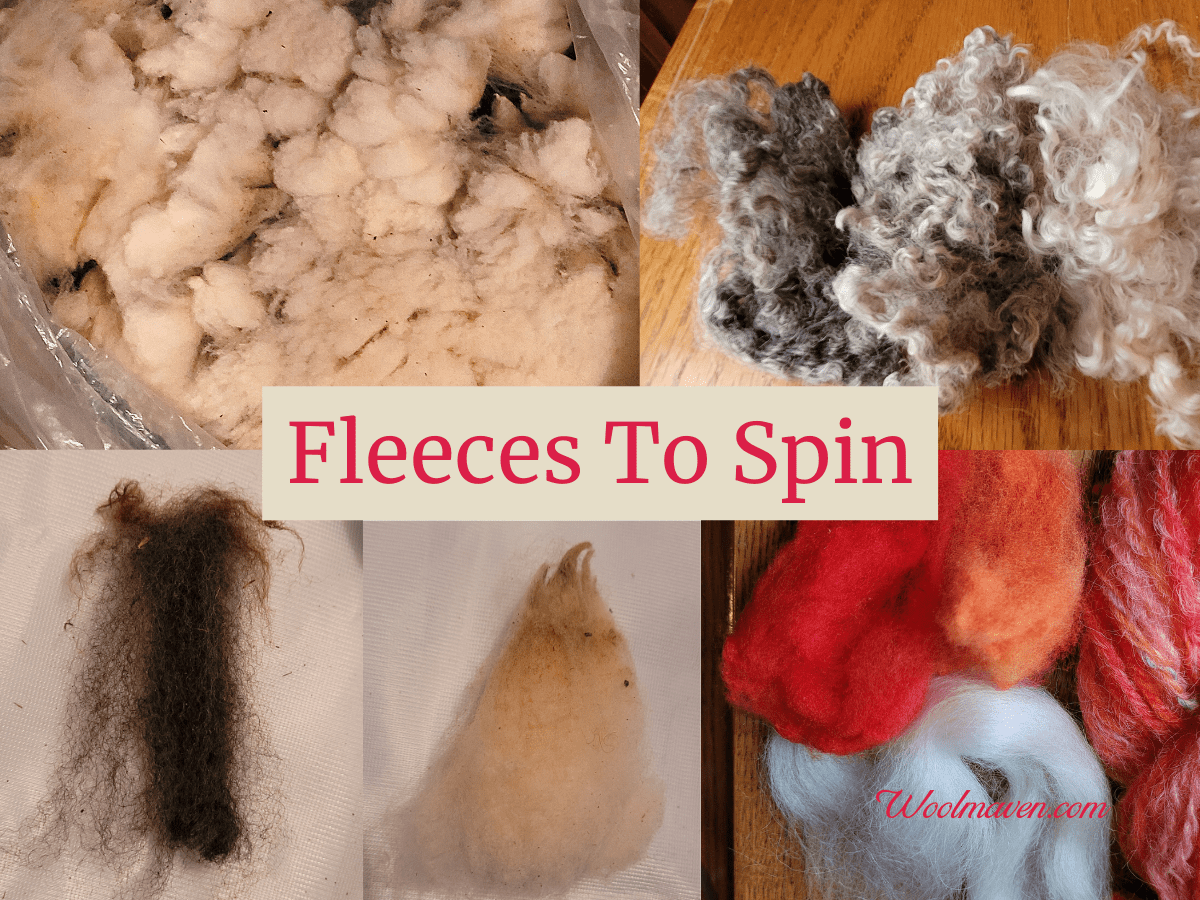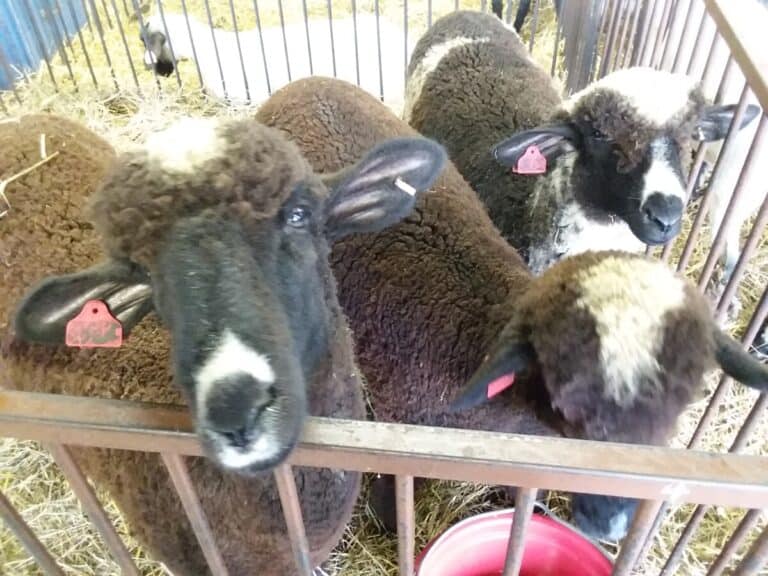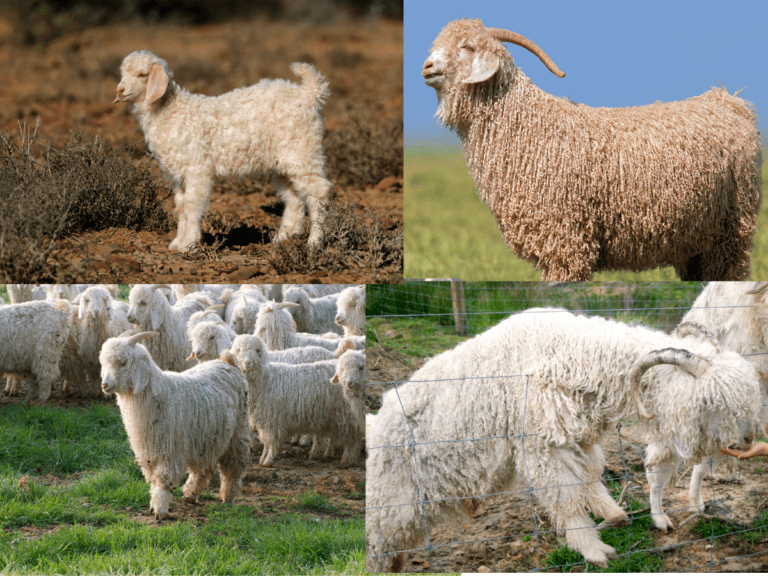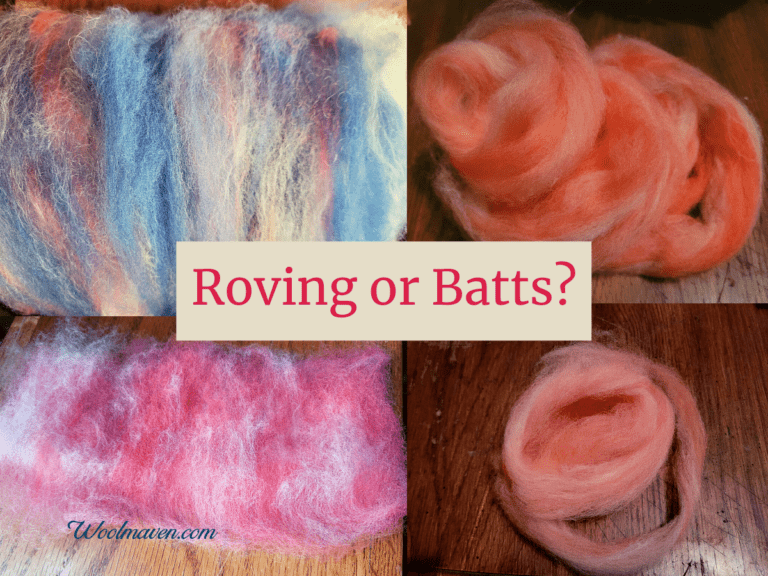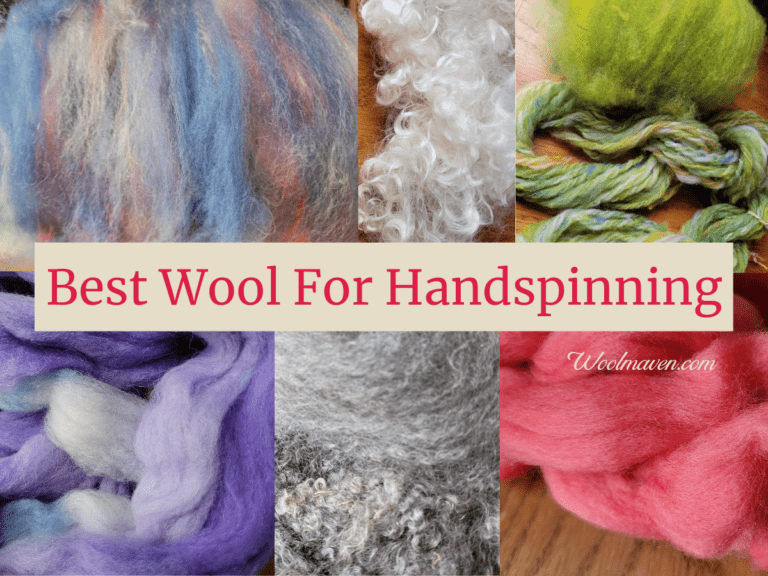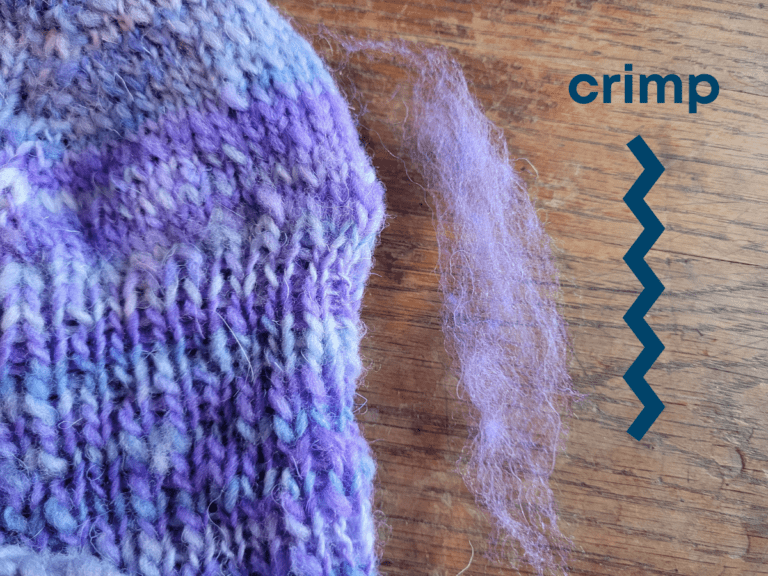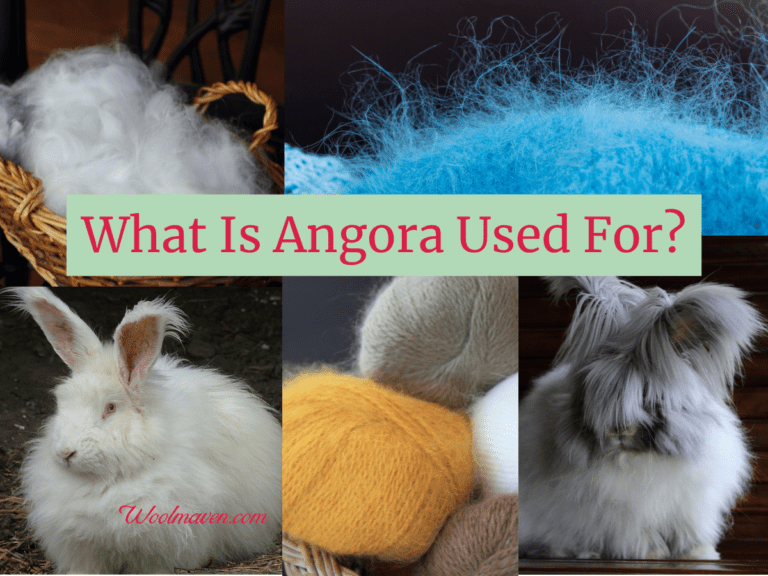How To Pick A Handspinning Fleece You’ll Love
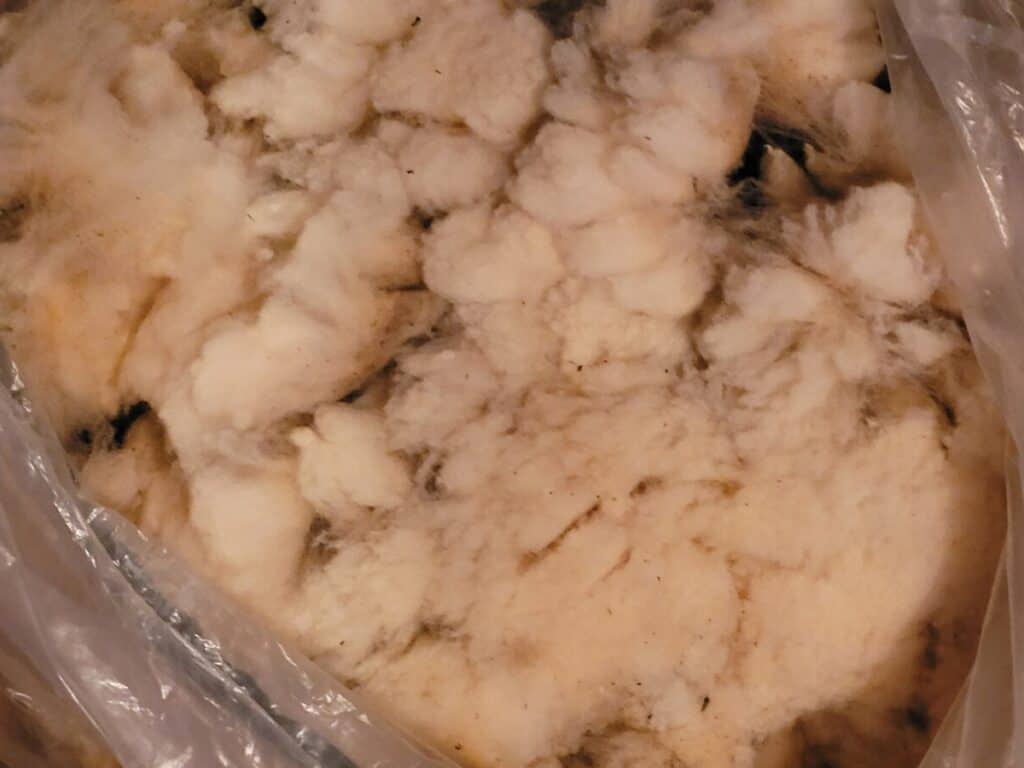
Buying a freshly shorn fleece this year? You’ll have a ton of choices, which is both good and not so good, since you now have to sort them all out and pick!
So, how do you pick a fleece that you’ll love to work with and will suit your handspinning skills or project plans?
7 Places To Buy Wool For Handspinning gives you a few ideas of great places to source wool!
This post contains affiliate links, which means I receive commissions if you choose to purchase through links I provide (at no extra cost to you).
Looking for a great resource on which fiber to pick and how best to use it? Consider getting The Fleece And Fiber Sourcebook, filled with wonderful pictures and details on just about any wool you can find.
What to look for in a sheep fleece
Since fleeces vary, sometimes significantly, the best way I know of to make sure you get what you need in a handspinning fleece is a checklist.
Here are the things that I look for when considering a fleece to purchase.
Have a plan for the wool
Have a plan If you want a fleece to spin something specific, make sure that the fleeces you are looking at fit this criteria. Not all wools will do all things!
I believe that all wools have a place in woolcraft and have something that they are better than most at being used for.
The trick is to match your plans with the wool you get!
If you are new to this breed of sheep’s wool, spy around and see what other handspinners are doing with the type of fleece you are interested in.
Consider emailing the seller and ask if the fleece that catches your eye would work well for your project.
Of course, you could just be interested in the fleece and want to explore how it works for you and see what you get. Nothing wrong with that, either!
Characteristics Of An Easy To Spin Wool gives you the things you’ll want to see in your potential wool purchase to make sure it is easy to work with.
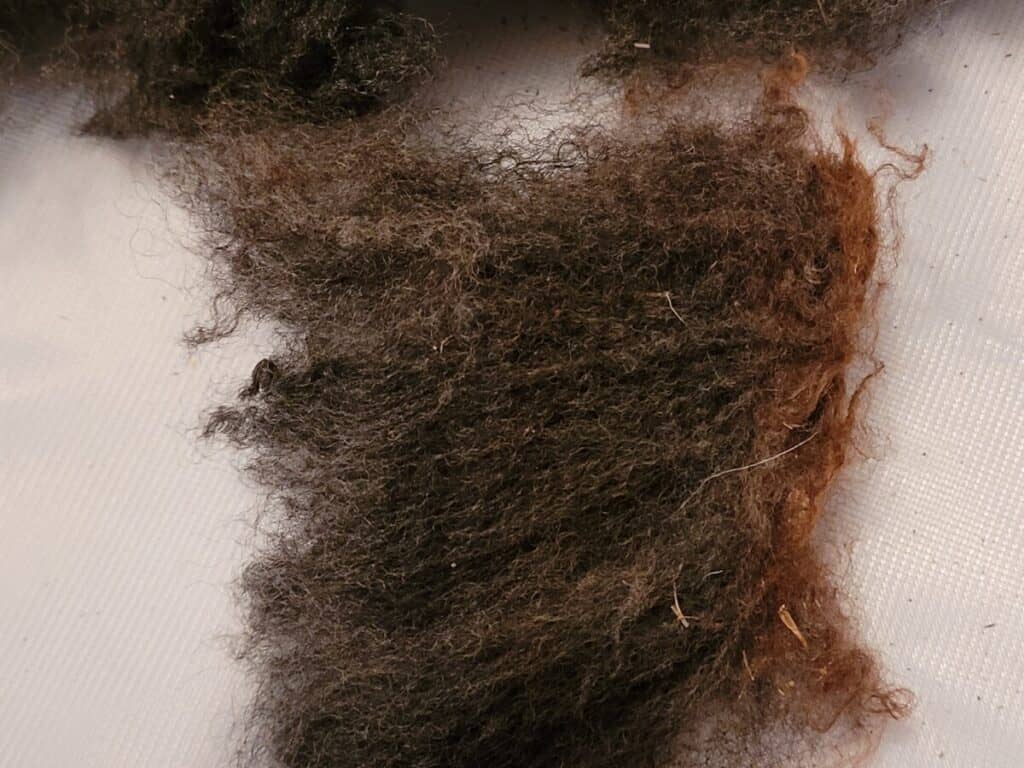
Consider the micron count
Micron count Some folks that sell their fleeces have them tested and will be able to give you a specific micron count for each fleece, which is great for you!
More commonly, folks selling fleeces will tell you about the fleece and the breed or cross of breeds that it comes from and you’ll have to guess an approximate micron range based on that.
The catch is that fleeces from individual sheep can and do vary significantly across the breed, especially if it is a less well developed breed or a breed with drastically different lines.
For example, you can get a fine wool Shetland fleece or you can get a double coated Shetland fleece, which would be much more coarse due to the outer coat.
Both types of Shetland are Shetland and each has it’s uses and will give you considerably different fleeces to work with depending upon which one you buy.
Granted, this is an extreme example of fleece variation in one breed, but you get the idea. The same breed does not equal same fleece!
Wool Grades by New Mexico State University is an interesting article with a chart showing the micron ranges of quite a few breeds.
It’s a good place to start if you are interested in micron count of wool or clean wool yields (% wool left after scouring out the lanolin).
What is the staple length?
Staple length that is long enough for you to comfortably spin. For me, this is at least 3.25 inches. You’ll have your own minimum, stick to it!
Finer wools tend to have shorter staple lengths, so be especially particular with acceptable for you staple length if you are looking for fine wool fleeces.
Staple Length In Wool & Why It Matters goes into more detail, if you are interested.
Are there second cuts?
Minimal to no second cuts Ideally your fleece will have no second cuts, but sometimes you find a few.
If second cuts are everywhere that lowers the value of the fleece to you, since each second cut takes away from the spinnable staple length.
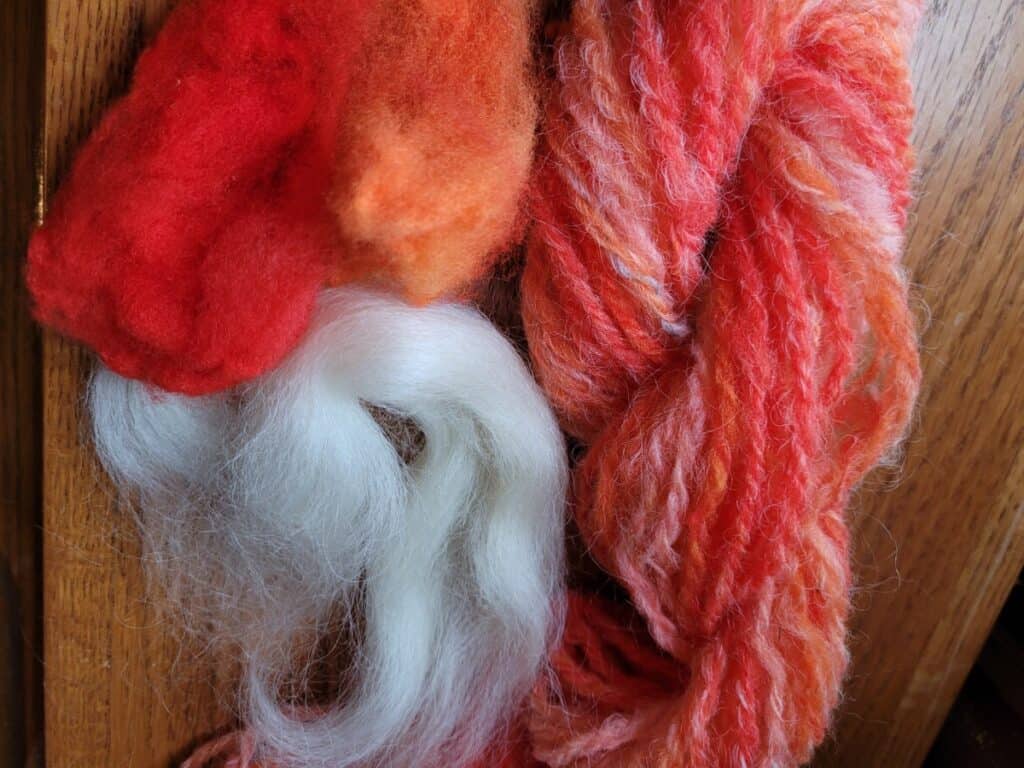
I kept the fleece because it has a longer staple length than most of our sheep even though it is not have the feel I normally choose. It’s actually working well for me. After washing and dyeing it, I put it through the drum carder twice, which gets out most of the hay bits, and it was ready to go.
How much debris is in the fleece?
Debris can be dirt VM (vegetable matter) or whatever else the sheep managed to get herself into.
Some of these contaminants drop out fairly easily, for instance, washing the fleece should easily remove the dirt.
However, other debris, like VM, are more determined to stay with the wool and take more work to remove.
Look at the tips of the wool
Good tips Be sure that the fleece you choose has good tips, if the fleece is bagged, you’ll need to get it out and unroll at least some of it to see the ends.
The wool has the cut side, which faced the sheep and usually looks nice, but you want the other side, to see how the tips of the fleece look.
If the tips are knotted up or straggly looking, they are going to be hard to near impossible separate out.
When you are carding, you’ll probably need to get rid of the tangled section of fiber, which will come off or comb out with a flick carder or you could cut it off.
Keep that in mind and make sure you have enough staple length to make this fleece worth it to you.
Do You Need To Wash Wool Before Spinning? shows you things to look for to help you determine how to best prepare your fleece for spinning.
Buy fleeces shorn within the year
Freshly shorn fleeces You want to buy a fleece that has been freshly shorn, by this I mean shorn within the last year.
As a fleece sits, the lanolin hardens, making it harder to work with and necessitating scouring rather than just suint soaking, before carding or combing.
Is the bag all from one sheep?
All one sheep I would want to make sure that the fleece that I buy is from one sheep.
If the wool is all from one sheep, the yarn more likely to be similar for anything I spin from the bag.
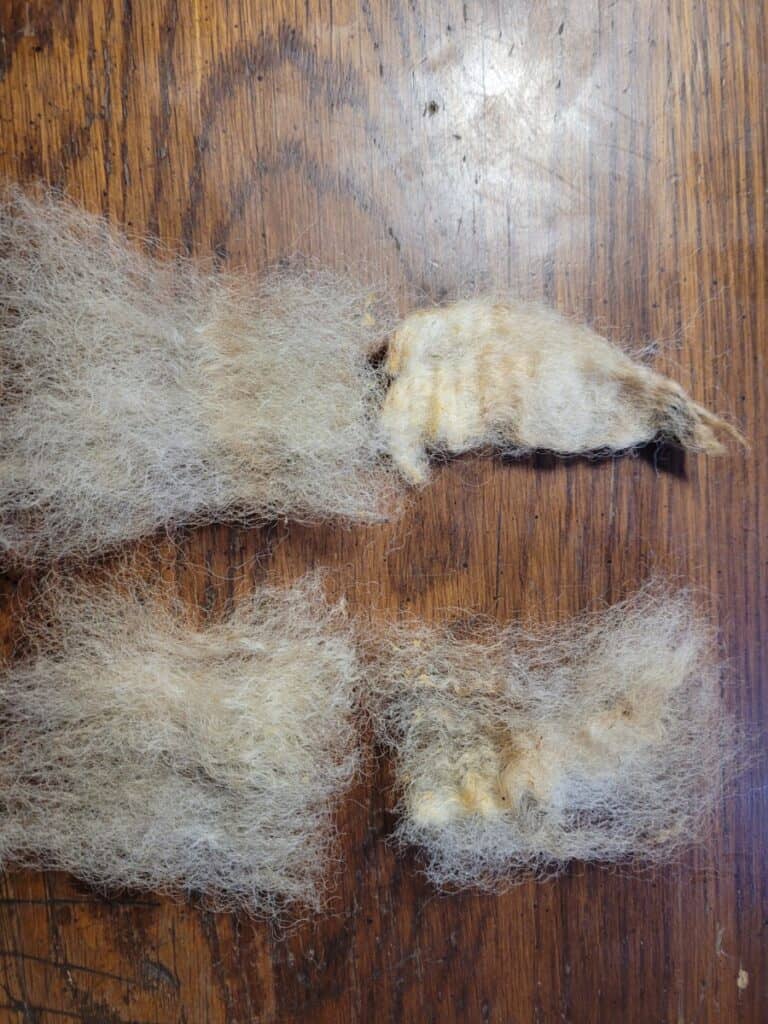
Able to separate locks
Able to be separated locks Look for a fleece that has locks that are able to be separated pretty easily by hand. This somewhat goes with the good tips section.
If you can separate out the locks with just a bit of fiddling with your fingers, you can consider working with the fleece with less preparation.
If the locks are hard to separate, you’ll need to card or comb the wool thoroughly before it is in spinnable condition.
Are there any felted sections?
Felted fleece You should know that some fleeces have the ability to felt, right on the sheep!
If the fleece you get is partially felted, is it worth the effort to you to work with this fleece to get it to spinnable condition?
We had a few Finn sheep that would shear what seemed like a pelt, rather than wool. It was already well felted close to the sheep’s body.
I tried to work with the fleece, since I had ideas of what to do with the wool, but ended up giving up on it, since it was such a mess to try to get apart.
You may have some wiggle room if you have a long stapled fleece and you are able and willing to pull out individual locks or can just cut them.
Once again, that’s significantly more work for you and if you decide to cut the wool, will be reducing staple length, which is probably the reason you bought the long wool fleece to begin with!
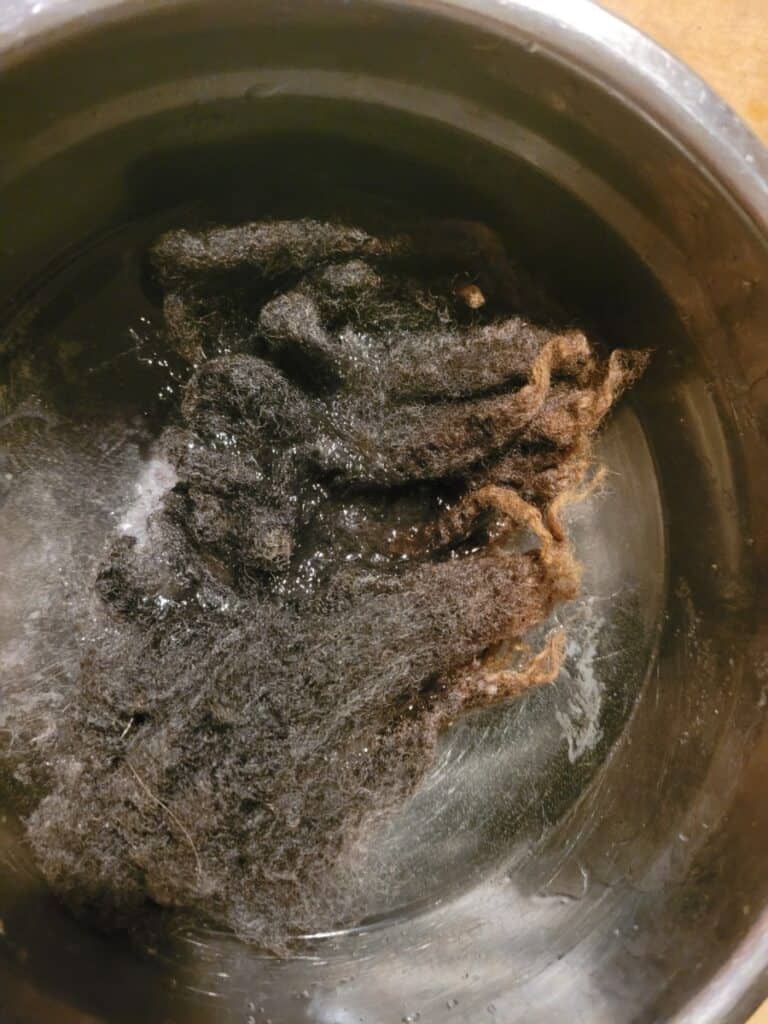
Amount of stained wool
Minimal to no staining Another common problem with fleeces can be staining, specifically yellow, but it could be any staining.
These stains are tough, if not impossible to get out of the wool, which means you’ll need to either live with the color or dye the stained wool to mask the stain.
If the staining is minimal and the rest of the fleece is perfect for you, a small amount of unusable or must be dyed fleece could be acceptable.
If the staining is more prevalent or you do not want to deal with it, heavily consider looking for another fleece that will yield more usable wool.
As your skills grow, you’ll like different wool
I have found that as I expand my experience and grow my skills, I want to work with different wools and go through ever changing phases of best wool for me.
Don’t be surprised when a type of wool that wasn’t for you earlier in your spinning is something that you are now interested in working with as a more advanced handspinner.
As an example, when I was a beginner, merino was a disaster for me, now I really like it, same for angora rabbit, I enjoy working with both.
My skills and abilities have changed for the better through the years, so will yours!
Crossbred wools can be variable
Know that wool from crossbred sheep will be variable when one or both of the parents are crossbred.
If both parents are purebred and the lamb is the cross, the wool from that lamb is likely to be very predictable. This is the cross where the dominant traits show.
When this crossbred lamb has her own lambs, that’s when the genetic variability in the fleeces will start to show. These are the recessive traits showing up.
In this second generation of crossing genetics, the traits that were not seen in the first cross, but were still there, can start to show in the fleece.
These traits might be great from your perspective as a handspinner, or they might be something that you don’t want. It’s a guess and see type of thing.
For example, we have a commercial flock of sheep that are crosses of Dorset and Polypay, with a few other things mixed in occasionally.
I like to keep back a few fleeces at shearing to mess around with for the year, this year I kept 5, which will be more than plenty!
The reason I kept 5 is that I need to play around with the fleece first, before I can tell if I like them or not.
Since the sheep are a mix of multiple breeds that keep mixing each year, I never know what a fleece will do for me, until I try it out.
I tend to keep back more than I need, planning on only a few of them ending up as something I plan to use and for the rest to be set aside.
My one and only black sheep has a nice fleece to use, once it is washed!
Straight off the sheep, it’s a straggly mess that I would not have kept if she wasn’t such a pretty, naturally colored ewe.
Other fleeces that I have kept back are much nicer on the sheep and look great shorn, but are not what I want to work with once I start playing around with the wool.
It’s always a guess, you never know what you’ll like until you try!

